Humans as “geological agents”
We are living a moment of particular urgency, calling for a paradigmatic shift in the relationship between Humans and Nature. Worldwide, there is a growing concern on the negative impacts of human activities on the environment. The dramatic and pervasive effects of these activities are supported by scientific evidence: microplastics, for example, have invaded even the most remote and pristine areas of the planet, as high mountains or deep oceans.[1]
In the last few years, the term Anthropocene has become a popular way to indicate the significant repercussion of human activity on Nature. The term was introduced in 2000 by Eugene F. Stoermer and Paul J. Crutzen to express the impact of anthropogenic change in geological terms[2]. The word suggests that humanity has become a “geological agent”, pushing the planet into a state of instability and even to destruction.[3] In the debate on the Anthropocene it is important to note the link established by several authors between the environmental crisis and the anthropocentric approach developed in the Western world over the years, as a result of an economic and cultural process.[4] According to McShane, in ethics, anthropocentrism is usually described as a view or belief affirming that “only human interests directly matter morally” while other interests only matter “to the extent that they affect human interests.”[5]
The use of the term Anthropocene, however, has been subjected to several critics. According to Crist, this wording is too neutral to describe reality, appearing somehow “dispassionate and civilized”.[6] The Anthropocene discourse reinforces an anthropocentric narrative that depicts Homo sapiens as the conqueror of geographical spaces and geological time, while silencing the non-human perspectives.[7] It entails an idea of a “domesticated” Earth, modified in order to remain a “workable and safe human stage”.[8] In other words, “the inability to change historical course remains a tacit adhered-to claim within the discourse of the Anthropocene”[9], while “rationalizing (and relatedly ‘greening’) humanity’s totalitarian regime on Earth”.[10]
The debate on the Anthropocene discourse also invests the starting point of this geological era and the identification of the anthropos to be considered responsible for the development of this phenomenon.
When did it start?
The Industrial Revolution is commonly considered the historical event that marked the beginning of the Anthropocene, a process that has profoundly changed the relationship between humans and Nature. Until about 1750, the necessities of the people were mostly satisfied by the land, in the context described by Marks as the “old biological regime”.[11] The use of fossil fuels, coal and petroleum, enabled the growth of humans’ production and demography, while adding greenhouse gases to the atmosphere.[12]
According to Capra & Mattei, the Western jurisprudence and science have strongly contributed to the development of a mechanistic modern worldview and extractive mentality, considered as the products of the Industrial Age.[13] The authors identify in the privatization of the resources held in common (the commons), both in the civil and common law systems, a pivotal moment in the creation of an anthropocentric natural law, due to the changed relationship between the people and the land.[14] In particular, the process of land’s privatization that took place in England between the fifteenth and the nineteenth century has no precedent in history.[15] The phenomenon of the enclosures, strongly supported by the lawyers, scientists, economists and philosophers of that period, allowed the concentration of capital that, along with scientific advances, produced the technological development that made the Industrial Revolution possible.[16] However, this imposed transformation caused violent revolts by the peasants, who tried to resist the changes causing their displacement and forced urbanization, with the consequent rise of the roaming poor.[17] This phenomenon, described by Karl Marx as “primitive accumulation”, caused the separation of the people from their means of production and pushed them to become wage-labourers in the new factories. As a result, they lost the capacity to provide for themselves their means of substance from Nature.[18] Although the peasants’ lifestyle was certainly hard and subjected to the injustices of the feudal system, it was centered on the cooperation between the members of an ecological community that promoted inclusion. This was replaced by the alienation and isolation of the urban industrial work.[19]
While the Industrial Revolution was progressively and dramatically changing the lives of the English peasants and marking a rupture in their relationship with Nature, it was also having great repercussions in other parts of the world. During the eighteenth century, India and China had a “competitive advantage” over Europe, both in agriculture and industry.[20] Indian cotton textiles, in particular, had a higher quality and lower price than English ones, making the Asian country the larger exporter of cotton textiles in the world.[21] This led the British government to ban the importation of Indian textiles in 1707.[22] The Industrial Revolution reduced the costs of British textiles’ production, which started to grow in the global market because of lower prices.[23] The colonial expansion of England in India, from Bengal in 1757 to the complete control of the peninsula by the mid-1800, allowed Britain to remove the tariff barriers to imports, and the British textiles soon started to invade the Indian market. The colonial, free-market oriented policies, inspired by Adam Smith and David Ricardo, soon led to the deindustrialization and ruralization of India.[24] Along with the commerce of opium in China, this provided Britain huge profits, with the effect of reversing the trade schemes between Europe and Asia.[25] The rapid industrialization of other European countries, determined to follow Britain’s example, was accompanied by the colonization of the rest of Asia, Africa and Latin America, which provided to the colonizers labor and raw materials, increasing their economic and military power while allowing their rich elites to accumulate the capitals to reinvest.[26] This led to the formation of a gap between the so-called Global North and Global South that still persists today.[27]
To express the pivotal role of the capitalist system in the environmental crisis, according to Moore the word Anthropocene should be replaced by Capitalocene, meaning “Age of the Capital”.[28] Contrary to the first term, Capitalocene would provide some information and perspectives that Anthropocene omits: 1) the multifaceted nature of Capitalism which comprises “capital, power and nature as an organic whole”[29]; 2) the relations of power which allowed a succession of global conquests for the appropriation of natural resources; and 3) it overcomes the standard narrative that indicates the Industrial Revolution as the origins of the modern world but omits to discuss the class conflict, imperialism and accumulation of capital as the driving forces of the phenomenon.[30] According to the author, Capitalism should be seen as a way of organizing nature; not only a world-economy but rather a “world-ecology”, in a perspective that overcomes the Cartesian dualism ecology/economy.[31] In this context, primitive accumulation (which led to proletarianization), the generalization of private property (as the enclosures) and alienation (including from Nature) transformed respectively work into labor-power, land into property and nature into Nature, an abstract entity separated from Humanity.[32]Humanity, however, did not comprehend all humans, but only the “civilized” ones, therefore excluding Indigenous Peoples or African slaves, which were rather considered by colonizers as a part of Nature.[33]
Some authors challenge the common idea of the Industrial Revolution as the starting point of the Anthropocene and have focused instead on other relevant elements, in particular on colonialism and its consequences. Lewis & Maslin propose to situate the beginning of this geological era on the basis of a Global Stratotype Section and Point (GSSP), commonly known as “golden spikes”, meaning a global marker in a stratigraphic material such as rock, sediment or glacier ice.[34]On this ground, they reject the Industrial Revolution as the starting date of the Anthropocene because this event has not marked a “golden spike”, as it was too local and had a little impact on global atmospheric CO2 (carbon) concentration until the nineteenth century.[35] The authors focus instead on two years marking “golden spikes”: 1610 and 1964.[36]1610 golden spike is connected to the arrival of the Europeans in the Americas, that led to a decline in native population and a drop in atmospheric CO2 concentration between 1570 and 1620. An estimated population of about 61 millions Native Americans in 1492 dramatically decreased to 6 million by 1650, due to wars, famine, exploitation and diseases, that also caused the cessation of farming and subsequent reforestation.[37] 1964 golden spike is instead connected to the increase in 14C (radiocarbon) concentration in the atmosphere due to the nuclear tests that took place in the context of the Cold War.[38]
Who is the anthropos changing planet Earth?
The main shortcoming in the history narrated by the Anthropocene seems to be that of an indistinct humanity exploiting Nature in an indistinct way, equally hit by the ecological crisis, sharing a common, possibly tragic destiny.[39] The reality, however, is very different.
According to the 2019 Report of the Special Rapporteur on extreme poverty and human rights:
“Climate change will exacerbate existing poverty and inequality. It will have the most severe impact in poor countries and regions, and the places where poor people live and work. Developing countries will bear an estimated 75–80 per cent of the cost of climate change.”[40]
The Special Rapporteur also highlights that:
“Perversely, the richest people, who have the greatest capacity to adapt and are responsible for and have benefited from the vast majority of greenhouse gas emissions, will be the best placed to cope with climate change, while the poorest, who have contributed the least to emissions and have the least capacity to react, will be the most harmed. The poorest half of the world’s population – 3.5 billion people – is responsible for just 10 per cent of carbon emissions, while the richest are responsible for a full half. A person in the wealthiest 1 per cent uses 175 times more carbon than one in the bottom 10 per cent”.[41]
It is clear that while the richest and most developed part of the world is actively causing the ecological crisis, another part, the poorest and most vulnerable, is suffering the consequences of an unsustainable cultural-socio-economic system that ignores its needs and even survival.[42]
Mirzoeff analyzes the movement Black Lives Matter in the context of the Anthropocene and affirms that the latter’s narrative overlooks the existence of race and systematic racism and should be considered as a structural part of white supremacy.[43] Furthermore, the author asserts that the anthropos described by the Anthropocene is the white, imperialist, Euro-American man that has dominated, colonized and enslaved African, Asian and Native peoples.[44]
On a similar note, Davis & Todd affirm that the inclusion of Indigenous knowledge in the contemporary discussion over the Anthropocene shows that:
“Anthropocene is not a new event, but is rather the continuation of practices of dispossession and genocide, coupled with a literal transformation of the environment, that have been at work for the last five hundred years. Further, the Anthropocene continues a logic of the universal which is structured to sever the relations between mind, body, and land.”[45]
The perspective of Indigenous peoples is particularly relevant, not only because their involvement, knowledge and experience allow to better tackle the environmental crisis, but also because they bear it worst impacts.
As stated in the 2016 Report of the Special Rapporteur on the rights of Indigenous peoples:
“Indigenous peoples are among those who have contributed least to the problem of climate change, yet they are the ones suffering from its worst impacts. They are disproportionately vulnerable to climate change because many of them depend on ecosystems that are particularly prone to the effects of climate change and extreme weather events such as floods, droughts, heatwaves, wildfires and cyclones.”[46]
The Special Rapporteur also underlines that:
“While indigenous peoples account for 5 per cent of the world’s population, they comprise 15 per cent of those living in poverty. Some 33 per cent of people living in extreme rural poverty globally come from indigenous communities. The World Bank estimates that more than 100 million people across the world risk being forced into extreme poverty by 2030 due to climate change. This has significant implications for indigenous peoples, who are already facing severe socioeconomic disadvantages. These figures are particularly alarming given the wealth of natural resources that are located within indigenous territories and the valuable contributions indigenous peoples can provide in alleviating climate change. Traditional indigenous territories encompass about 22 per cent of the world’s land surface and overlap with areas that hold 80 per cent of the planet’s biodiversity. Their role is vital for sustainable environmental management of natural resources and biodiversity conservation, both of which are essential elements for combating climate change.”[47]
Davis & Todd state that recognizing colonialism as the beginning of the Anthropocene would avoid it to be a “universalizing project” that will “re-invisibilize the power of Eurocentric narratives, again re-placing them as the neutral and global perspective”.[48] The authors decided to assert their point from a specific perspective, that of North America, the place where they live and grew up, as they refuse to adopt a “un-embodied or universal position”, in order to stimulate the emergence of reflection and histories from other parts of the world.[49] In their view, connecting the Anthropocene’s beginning to colonialism, as proposed by Lewis & Maslin, would have the double effect of including the Indigenous knowledge from North America and of explicitly linking the ecological crisis to “proto-capitalists logics based on extraction and accumulation through dispossession.”[50]
The beginning of the Anthropocene, then, seems to vary on the basis of the perception of the anthropogenic change and its impact on life. On this point, Whyte affirms that some Indigenous peoples look at the gloomy future described by the Anthropocene narrative from a place that is, today, already, “the dystopia of our ancestors”.[51] In fact, the changes produced by the settlers have reshaped their ecosystems in such a way that makes it “hard to recognize anything indigenous”, causing the end of the relationship with the animals and plants that are an important aspect of the Indigenous culture and economy.[52] Therefore the future environmental changes will solely add for Indigenous peoples an ulterior effort, that is having to adapt to the impacts of climate change.[53] The displacement and confinement Indigenous peoples have suffered in North America make this effort much harder, not only in terms of survival, but also in terms of biodiversity conservation.[54]
The Anthropocene is becoming a common concept to describe the pervasive and negative effects of human activities on the planet, but its meaning is widely questioned. The existing debate on the beginning of this geological era and on the inclusion in the anthropos of the whole, undifferentiated humanity, allows to investigate the critical views often ignored by the mainstream discourse. The Anthropocene narrative, in fact, seems to perpetuate a Western worldview that tends to ignore the historic and current relationship of power occurring between the colonizer and the colonized, the rich and the poor, and its impact on the planet Earth. By concealing the specific causes and responsibilities for the environmental destruction, it also annuls the existing differences in the approach towards Nature and their effects. In other words, if everyone is responsible for the environmental crisis, no one is. This makes the search for a solution harder, as it tends to homologate and obscure alternative worldviews that could better tackle the problem. The Anthropocene narrative is likely going to shape the future; to be effective, it is fundamental for it to become inclusive. This narrative must necessarily include the views that are usually ignored in the mainstream discourse regarding the ecological crisis. Cultural diversity is a basic tool for the protection of the planet. As we will investigate in the next posts, the slow but steady emersion of a different worldview, and the abandonment of an anthropocentric, predatory approach towards Nature, has allowed, in several parts of the world, the recognition of the rights of Nature, inspired by the Indigenous cosmovision.
Stay tuned!
Notes:
[1] See Lisbeth Van Cauwenberghe, AnnVanreusel, et al., “Microplastic pollution in deep-sea sediments”, in Environmental Pollution, Vol. 182 (November 2013), pp. 495-499; see also Steven Allen, Allen, Deonie Allen, et al., “Atmospheric transport and deposition of microplastics in a remote mountain catchment” in Nature Geoscience, Vol. 12, No. 3 (2019), pp. 39–344; Christopher M.Free, Olaf P.Jensen, et al., “High-levels of microplastic pollution in a large, remote, mountain lake” in Marine Pollution Bulletin, Vol. 85, No. 1 (15 August 2014), pp. 156-163
[2] Luis J. Kotzé, Global Environmental Constitutionalism (Oxford and Portland, 2016), pos. 273 (digital format)
[3] Ibid.
[4] In particular, due to the Industrial Revolution
[5] Katie McShane, “Anthropocentrism in Climate Ethics and Policy”, in Midwest Studies in Philosophy, XL (2016), p. 190; see also Helen Kopkina, Haydn Washington, Bron Taylor and John J. Piccolo, “Anthropocentrism: More than Just a Misunderstood Problem” in Journal of Agricultural and Environmental Ethics, No. 31 (2018)
[6] Eileen Crist, “On the Poverty of Our Nomenclature” in Jason W. Moore (ed.), Anthropocene or Capitalocene? Nature, History, and the Crisis of Capitalism (PM Press, 2016), p. 18 (digital format)
[7] Ibid. pp. 17-18
[8] Ibid. p. 18
[9] Ibid. p. 22
[10] Ibid. p. 29
[11] Robert B. Marks, The Origins of the Modern World: A Global and Environmental Narrative from the Fifteenth to the Twenty-First Century(Rowman & Littlefield Publishers, 2019), pos.1998 (digital format)
[12] Ibid.
[13] Fritjof Capra, Ugo Mattei, The Ecology of Law (Berrett-Koehler Publishers, 2015), pos. 48 (digital format)
[14] Ibid. pos. 908 ff.
[15] Ibid., pos. 953
[16] Ibid.
[17] Ibid. pos. 964
[18] Michael Perelman, The Invention of Capitalism: Classical Political Economy and the Secret History of Primitive Accumulation (Duke University Press, 2000), pp. 98-99 (digital format)
[19] Fritjof Capra, Ugo Mattei, The Ecology of Law, op. cit., pos. 1002
[20] Robert B. Marks, The Origins of the Modern World: A Global and Environmental Narrative from the Fifteenth to the Twenty-First Century, op. cit., pos. 2020
[21] Ibid.
[22] Ibid. pos. 2086
[23] Ibid. pos. 2692
[24] Ibid. pos. 2707
[25] Ibid.
[26] Ibid. pos. 2724 and 2930
[27] Ibid. pos. 2724
[28] Jason W. Moore, “The Rise of Cheap Nature”, in Jason W. Moore (ed.), Anthropocene or Capitalocene? Nature, History, and the Crisis of Capitalism, op. cit., p. 81
[29] Ibid.
[30] Ibid. p. 81 and 83
[31] Ibid. p. 85
[32] Ibid. pp. 85-86
[33] Ibid. pp. 90-91
[34] Simon L. Lewis and Mark A. Maslin, “Defining the Anthropocene”, in Nature, Vol.519, No. 177 (2015) p. 173
[35] Ibid. p. 176
[36] Ibid. p. 176 ff.
[37] Ibid.
[38] Ibid.
[39] Jason W. Moore, “The Rise of Cheap Nature”, in Jason W. Moore (ed.), Anthropocene or Capitalocene? Nature, History, and the Crisis of Capitalism, op. cit., p. 81
[40] Report of the Special Rapporteur on extreme poverty and human rights A/HRC/41/39 (2019), p. 4 https://undocs.org/A/HRC/41/39 (accessed 20 June 2020)
[41] Ibid. pp. 4-5
[42] On the relationship between climate change and class conflict see Murat Arsel, “Climate change and class conflict in the Anthropocene”, Inaugural Lecture 16 May 2019 https://www.iss.nl/en/media/2019-05-class-and-climate-and-class-conflict-anthropocenefull (accessed 27 May 2020); Emmet Fox,“Climate Change: the Ultimate Class Conflict” (2019) https://discoversociety.org/2019/03/06/climate-change-the-ultimate-class-conflict/(accessed 17 May 2020); Karl Cloete “South African metalworkers’ union: ‘For a class struggle approach to climate change and energy transition’” (2012) http://links.org.au/node/3056 (accessed 17 May 2020)
[43] Nicholas Mirzoeff, “It’s not the Anthropocene, It’s the White Supremacy Scene; or, The Geological Color Line”, in Richard Grusin (ed.) After Exctinction (University of Minnesota Press, 2018), p. 123
[44] Ibid. pp. 123-124
[45] Heather Davis, Zoe Todd “On the Importance of a Date, or Decolonizing the Anthropocene”, in ACME – An International Journal for Critical Geography, Vol 16, No. 4 (2017), p. 725 https://www.acme-journal.org/index.php/acme/article/view/1539
[46] Report of the Special Rapporteur on the rights of Indigenous peoples, A/HRC/36/46 (2016), p. 3
[47] Ibid. pp. 3-4
[48] Heather Davis, Zoe Todd, “On the Importance of a Date, or Decolonizing the Anthropocene”, op. cit, p. 763 https://undocs.org/en/A/HRC/36/46(accessed 20 June 2020)
[49] Ibid.
[50] Ibid.
[51] Kylie Powys Whyte, “Our Ancestor’s Dystopia Now: Indigenous Conservation and the Anthropocene”, available at https://kylewhyte.marcom.cal.msu.edu/wp-content/uploads/sites/12/2018/07/Our_Ancestors_Dystopia_Now_Indigenous_Co3.pdf (accessed 19 May 2020)
[52] Ibid. p. 3- 4
[53] Ibid.
[54] Ibid. p. 4
Picture from Google
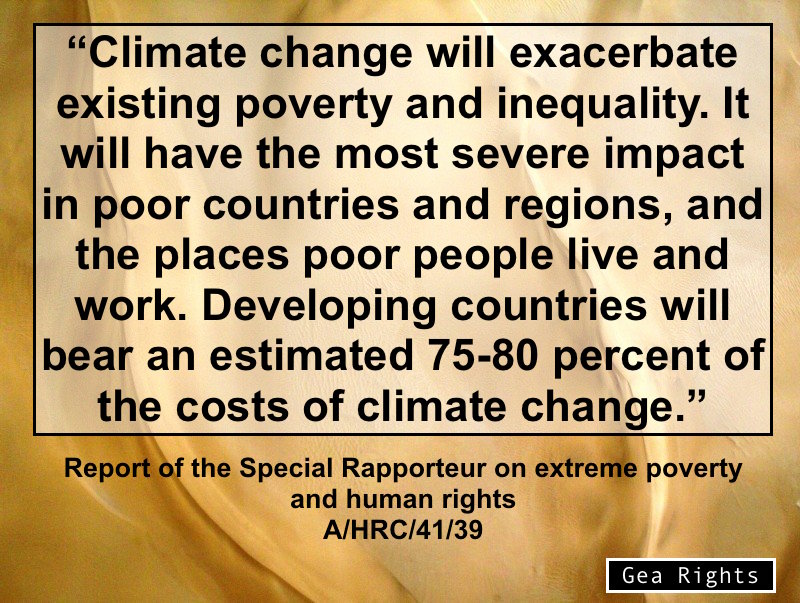
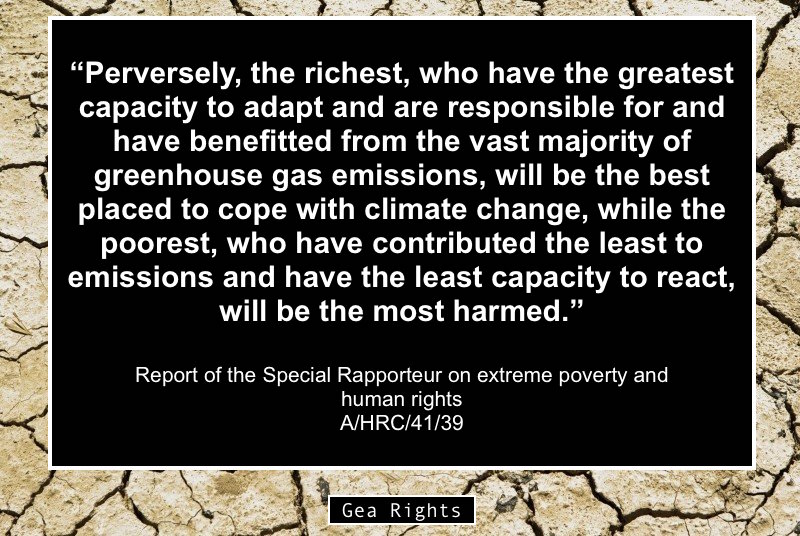
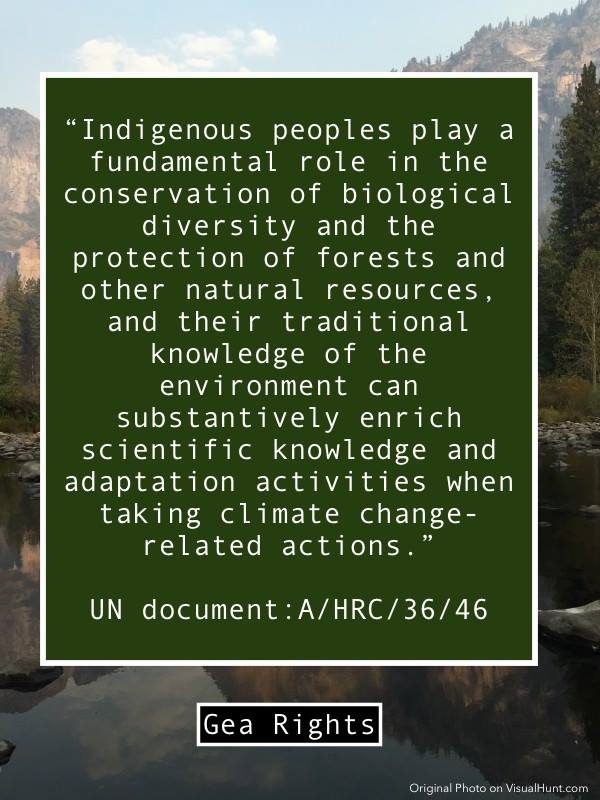
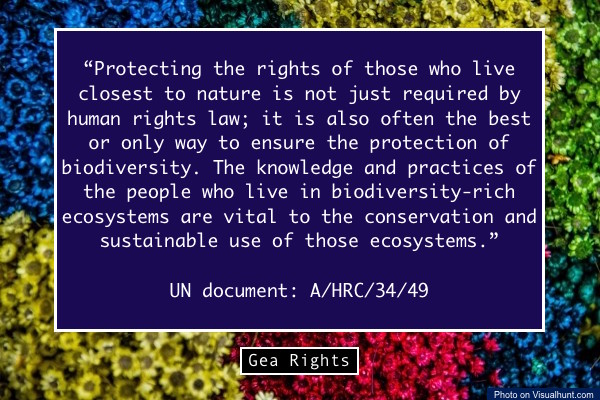

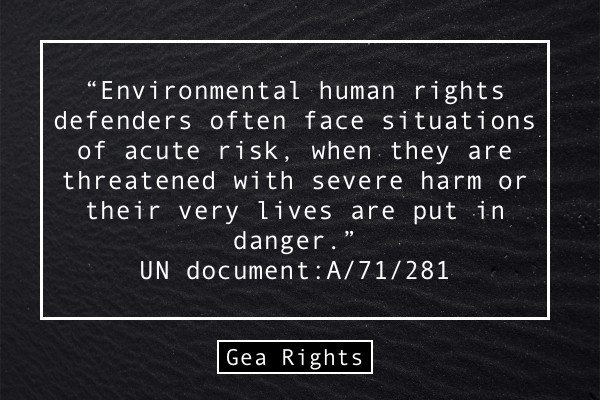

Leave a Reply